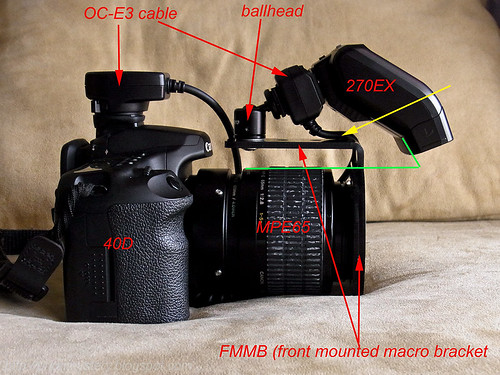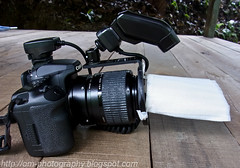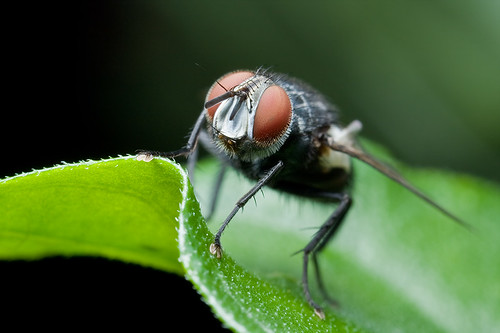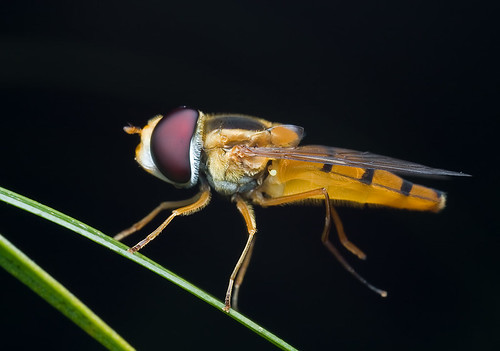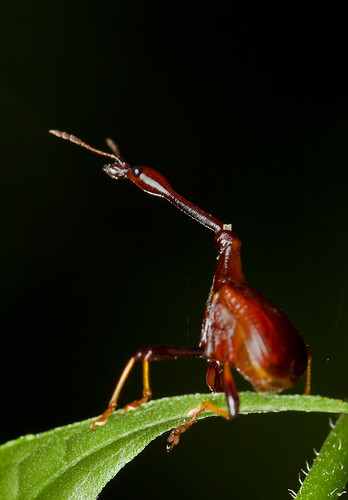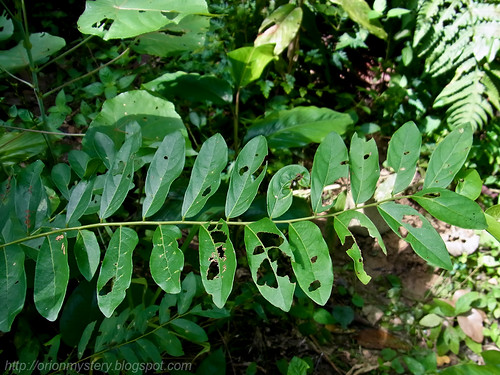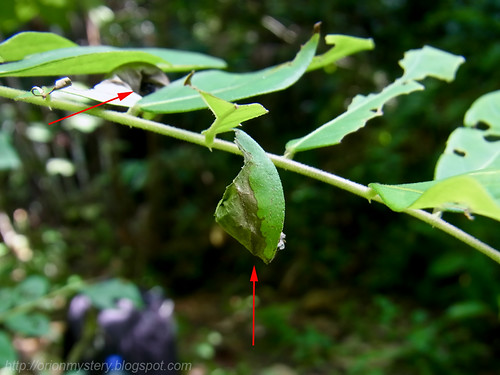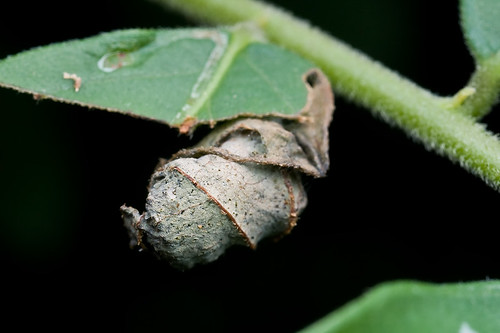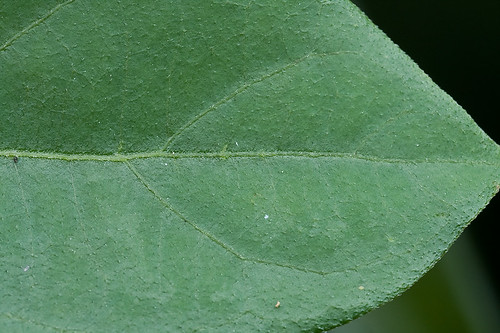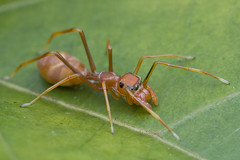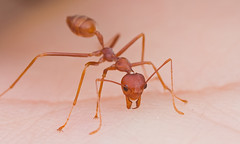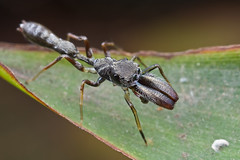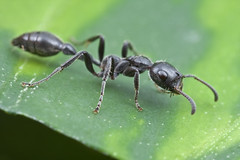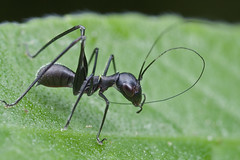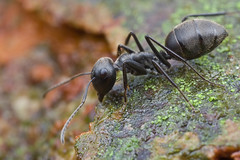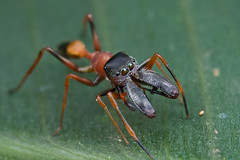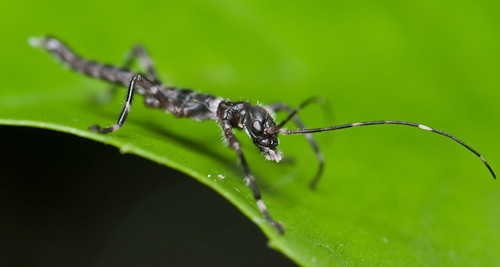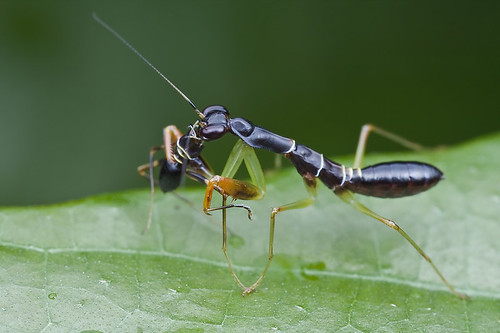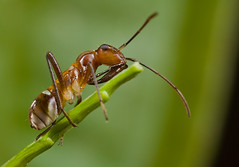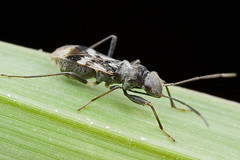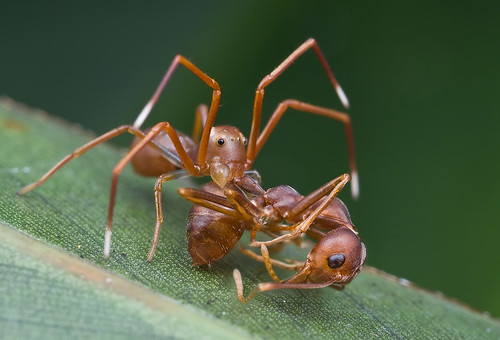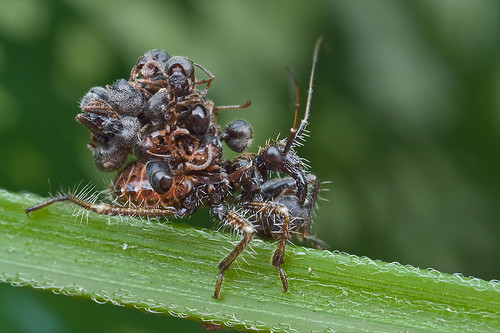1. shadow on the lower part of the subject
2. very dim catch light in subject's eyes.
In my opinion, these two issues were caused by the fact that the 270EX was too far out and as a result, the light would come down from a higher angle.
In this post, I will show you the solution. You will not believe how simple it is. I don't even need a ballhead anymore!
This animated gif will tell you everything you need to know!
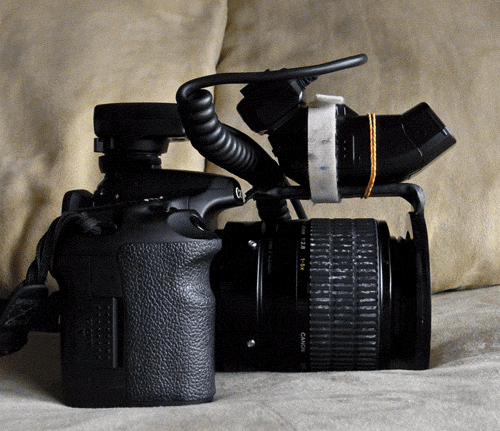
New vs old method:
Left: 270EX upside down/belly up Right: 270EX in normal position (upside up?:D)

The 270EX was on an FMMB (Front Mounted Macro Bracket) mounted onto the front of the lens. This is extremely convenient for lenses with no IF (Internal Focus). The bracket and speedlight will move along when you zoom in/change magnification. (Edit: i still love my MT24 though and use this 270EX on FMMB as backup only)
If you are not sure how to make an FMMB, here are your alternatives:
1. Lens hood based flash holder.
2. Mount Ring / Tripod collar
I was playing with my 270EX, extending the head out, tilting it at different angles when the idea struck me - turn the 270EX upside down (belly up)!
As can be seen in the gif animation, at its lowest flash head position, it can handle the MPE65's working distance at 5X (1.6 inches). With this improved setup, now I can just tilt the 270EX's flash head to take care of different working distances/magnifications of the MPE65! Sweet! Now, if only the 270EX comes with focusing light as well like the MT24EX does! But you can't have the cake and eat it too though.
The MPE65's working distances at different magnification are as below:
1X - 4 inches; 2X - 2.5 inches, 3X - 2 inches; 4X - 1.7 inches; 5X - 1.6 inches
Sample images taken with this new setup. I used the same concave light tent diffuser that I use for the MT24EX.
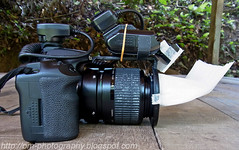
Blue tiger beetle (Neocollyris formasana?) with red socks.
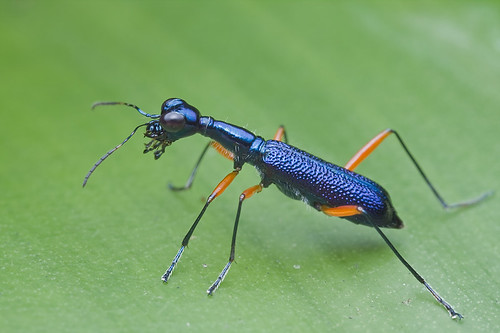
Grey ant, Diacamma sp.

A female Bathippus sp.(?) jumping spider
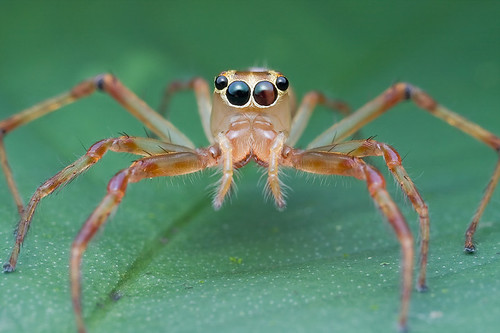
A tiger beetle with an ant's head
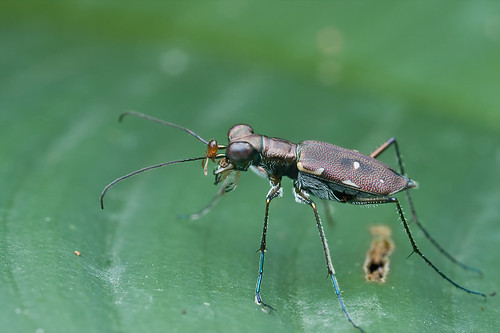
Check out this post for more macro rigs.
As an Amazon Associate I earn from qualifying purchases.
